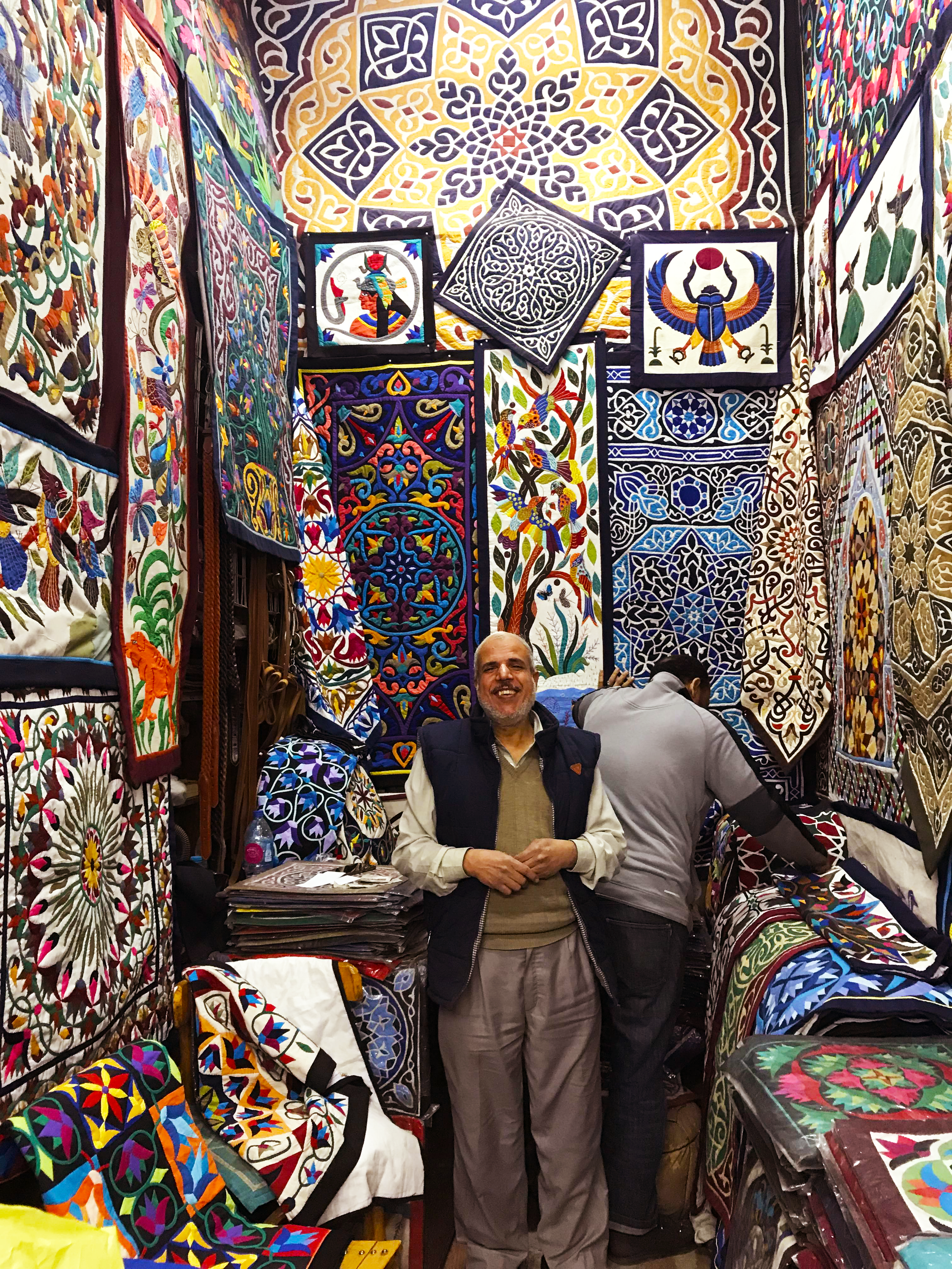
Egyptian Tentmaking
One of Egypt´s most vibrant forms of living heritage
The word ´´Khayamiya´´ is derived from the Arabic word ´´Khayma´´ which means ´tent´so khayamiya is ´the art of the tent´´. It is the art of sewing, by hand, a distinctly Egyptian form of needle-turned cotton applique´
The Khayamiya Collections
A specially tailored collection of high-quality Khayamiya cushion covers, that is the result of the collaboration of the Herfa team and the Master tentmaker Hany Abdelkader.
A unique collection of wall hangings of different designs and sizes sure to add colour and culture to any space.
Masters of Khayamiya
Meet two master Tentmakers also known as ´Khayamie´, a profession that is now endangered. They both come from large families of Tentmakers and have practiced the Art since childhood. They both own shops in the street of khayamiya. Most importantly, they are both very proud of their identity and art and passionate about showing it off to the world.
-
I have been a professional Khayamie (Tentmaker) for the past 35 years.my grandfather, Mahmoud Elmekawy was the Sheikh of Khayamiya in the 40s and his name was mentioned in the book of `Keswet ElKaaba´.I started learning the craft at the age of 8, I learned it step by step. My cousin Elhagg Hamdi was the one who taught me, and he taught me well. At the age of 15, I got my own cushion (used to support the back of the Tentmaker while they work) and worked on full pieces.
Together, with my cousin we worked on the book ´Goha the wise fool´.
I have travelled to present my work in many international exhibitions, in the USA, England, Italy, and France.
Herfa worked very closely with Hany to develop our exclusive collection of Khayamiya Cushion covers (view now). He worked with a team of 6 tentmakers to finish our order. More orders will mean hiring more tentmakers and teaching new apprentices, which will mean the continuance of the Art. It is a pleasure working with Hany and learning so much from him about khayamiya and seeing how passionate he is about this Art as well as getting to know him as a person and father.
-
I am 60 years old, I was born into the art of Khayamiya and have always been surrounded by tentmakers. I used to watch them work and learn from them . I started off with the simple task of threading the needle and sticking it into the cushion for the tentmakers. We used to work on something called the ´Tark´back then, that is a piece of textile that was approx.5.5m *2.75m, after these large pieces were stitched by hand , they were collected together to form a ´siwaan´ or ´suradiq´, where several events took place, such as parties, wedding and political events. When the printed Khayamiya came out, it changed the market. We stopped making the large tarq. We started making different products, smaller products such as the small wall hangers, bed covers, cushions and also clothing such as Abaya using small motifs.
The Art of Khayamiya
Tents have played an important part in the social, cultural, and political life of Cairo for centuries, Khayamiya has always served a dual function of shelter and ornament.It is an art that has been passed from one generation to the other and dates back to the time of the Pharaohs.
Till this day, they are used across Egypt to herald celebrations in public places. The same tent can host weddings, funerals, graduations, and festivals of all kinds. Unfortunately, it is now more common to find imported mass produced khayamiya imitated textiles, which threatens the existence of Khayamiya and the Tentmakers. To ensure survival, the tentmakers have become adaptive and creative and have adapted their work to creating smaller pieces such as wall hangings, cushions and tablecloths that are aimed at tourists visiting Egypt.
Khedival examples of Khayamia pieces are held in the collection of several museums, including the British Museum. In the 2000s, the first international exhibitions of Egyptian khayamiya were held in Australia, the UK, France, and the USA. These were curated by Jenny Bowker, an Australian quiltmaker and teacher.
The Street of Khayamiya
The majority of the tent makers reside in Cairo and work from workshops in the vicinity of a street named after them. The street of the Tentmakers is one of Cairo´s few remaining covered streets. It extends from the main spine of the historic walled city of Cairo immediately south of Bab Zuwayla, a monumental city gate. The street-spanning structure dates back to the seventeenth century.






